Key Causes of Customs Process Delays
Incomplete or Inaccurate Documentation
Incomplete, or incorrect, documentation is a primary reason for customs clearance delays, contributing to about 30% of problems experienced. In order to avoid any holdups, vital documents such as commercial invoices, packing lists and bills of lading need to be carefully drafted and precisely correct. Incompletions or inaccuracies in this paperwork prompt customs agents to request supplemental details that can stall the clearance process. Therefore, it is important to comply with the country’s specific documentation needs in order to make sure you don’t end up held over for a day or two.
Regulatory Compliance Challenges
The regulatory piece is a bear as every country has its customs regulations that are different and always changing. Ignoring these requirements not only risks penalties, but also accounts for around 25% of clearance delays. It is imperative to ensure staff are regularly trained and educated while remaining up to speed with updates in the law. Companies need to ensure staff involved in the customs process are educated about changing legislation to avoid non-compliance and subsequent delays.
Customs Inspections and Security Checks
Random customs checks are a further typical cause of delay and particularly impact larger orders. The increased security around the world means that thorough searches are now more likely and take more time than they used to, which has meant more delays in clearing space. About 15% of the shipments were held temporarily for inspection or the release was delayed, the reports say, emphasizing that businesses must prepare in advance. Relying on due-process and filing, is necessary to reduce the effects of such inspections.
Optimizing Documentation for Efficient Clearance
Best Practices for Accurate Paperwork
In order to improve customs clearance rate, best practices, such as the standard work of documentation process should be implemented. In addition to a standardized process, companies can also reduce error that delay times by installing a streamlined system. Frequent in-house training of employees responsible for documentation will also help to enhance the quality of paperwork put before the customs. Training helps staff stay current on new requirements and common traps. Besides, using checklists offering lists of required documentation per shipment offers an easy to follow guide that can be referred to prior to submission to minimize the risk of overlooking details and causing clearance delays.
Implementing Digital Documentation Tools
Automated documentation tools can automate the customs process and reduce manual errors and costs by providing, quick and easy access to information. With cloud-based solutions, the movement of paperwork can be tracked and updated in real-time, acting as a flawless link between all parties involved in the shipping process including the regulatory government authorities. Case studies have revealed that businesses using the digital documentation approach achieve clearance times that are 40% faster. These are fast, low-mistake solutions which allow you to make your way through customs documentation with much less difficulty and with much higher accuracy.
Common Mistakes to Avoid
One of the major blunders made with customs documentation is not verifying the accuracy of all documents you are sending out, as it can cause hold ups. This is especially important in a fluid regulatory landscape where developments can move at a fast pace. Keeping up to date with changes in custom rules is key - failure to do so can lead to non-compliance and penalties. An unordered filing system can also be dangerous as lack of documentation may delay customs processing for weeks or longer -- so an organized filing strategy is so important!
Leveraging Technology and Partnerships
Automated Customs Management Systems
Using electronic customs management systems considerably smoothes the way for getting through customs, eliminating the possibility of human error or anything that might slow it down. These systems frequently issue alerts to indicate if documents are not available and facilitate real-time communication with customs officers, leading to a more efficient clearance. Research shows that companies using automation realize up to 30% greater efficiency in customs brokerage operations. These systems are very crucial for improving customs management with streamlined processes and increased speed by removing manual bottlenecks.
Collaborating with Customs Brokers and Freight Forwarders
Working with freight forwarders and licensed customs brokers will be a useful resource when dealing with these customs regulations. These professionals can bring expertise and understanding of the local market to bear, driving timely implementation and saving businesses from the common pitfalls that lead to delays. The numbers bear out the fact that firms that take advantage of such relationships on average endure 10–20% fewer clearance delays, brokers/forwarders help ensure compliance, and customs clearance proceeding more seamlessly. Their grasp of local regulations and effective logistics will improve customs overall.
Utilizing Free Trade Agreements
Reduction in customs delay through FTAs:The FTAs provide a strategic advantage to the country in decreasing customs delays by reducing the duties and simplifying the customs procedures. "By understanding and taking advantage of the specifics of FTAs, you can accelerate the customs clearance process for your business. Studies also show that firms that make good use of FTAs can reduce customs clearance time by 15 percent. This is a consequence of lower tariff walls and simpler regulations, which enables quicker cross border trading and less office work.
Proactive Strategies to Mitigate Delays
Staying Updated on Regulatory Changes
Proactively keeping up with regulatory change is important to reducing any delays in customs. Shipping requirements, documentation and fees may also be affected by regulatory changes. Attending industry forums and having a subscription for general updates from customs authorities will help to ensure that businesses are notified and kept informed of any changes that might affect them. You should also be developing insights and learnings from this rapidly changing landscape into your operations too, such in order to best adapt and comply. This kind of proactive is an indispensable tool in forecasting potential impacts, and enables businesses to pivot strategies and responses to regulatory changes quickly.
Developing Contingency Plans for Unexpected Issues
It is very important to create robust contingency plans to manage with unexpected customs issues, and in order to reduce delays. A good plan will generally address the type of risks that have been identified as most appropriate, have specific responses already laid out in recommendation, and specific people also preassigned to execute the plan. This means that businesses can react quickly to any surprises, minimising their potential disruption. Plus you need to be doing all this in a timely manner as well as keeping your plans up to date so that they’re effective and in line with current customs problems too! This allows companies to be prepared for the handling of any unexpected problems that come up during customs and therefore to increase their operational stability.
FAQ
Why is documentation accuracy important in customs processes?
Accurate documentation is crucial in customs processes because incomplete or incorrect documents can lead to requests for additional information, causing delays. Ensuring that all documentation meets the requirements of the destination country helps avoid these bottlenecks.
What role do customs brokers and freight forwarders play in minimizing delays?
Customs brokers and freight forwarders are instrumental in navigating complex customs regulations. Their expertise and local knowledge help businesses avoid common pitfalls that cause delays, ensuring smoother customs processing.
How can Free Trade Agreements help reduce customs delays?
Free Trade Agreements (FTAs) reduce customs delays by minimizing tariffs and streamlining customs procedures. Utilizing FTAs allows businesses to expedite clearance processes by reducing the barriers and documentation typically required during cross-border trade.
What are automated customs management systems?
Automated customs management systems are tools that streamline the customs process by reducing human error and delays. They provide alerts for missing documents and facilitate better communication with customs officials, enhancing overall efficiency.


